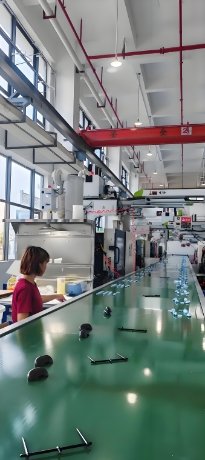
The electronics industry continually seeks innovative manufacturing methods to meet the demands for rapid prototyping, complex designs, and efficient mass production. Hybrid manufacturing, which integrates 3D printing with Electronic Injection Molding, emerges as a transformative approach. This synergy leverages the design freedom of additive manufacturing and the scalability of injection molding, all under the precision of skilled Mold Maker craftsmanship.
Understanding Hybrid Manufacturing
Hybrid manufacturing combines additive and traditional manufacturing processes to optimize production workflows. In electronics, this involves using 3D printing for rapid prototyping or creating intricate components, followed by Electronic Injection Molding for mass-producing parts with consistent quality. This approach allows for:
- Rapid Prototyping: Quickly iterate designs using 3D printing before committing to mold production.
- Complex Geometries: Produce intricate internal structures not feasible with traditional molding alone.
- Cost Efficiency: Reduce tooling costs and time-to-market by validating designs early.
The Role of Electronic Injection Molding
Electronic Injection Molding is pivotal in producing high-volume, precise electronic components. It offers:
- Material Versatility: Accommodates a wide range of thermoplastics suitable for electronic applications.
- Dimensional Accuracy: Ensures consistent part dimensions critical for electronic assemblies.
- Surface Finish: Achieves desired textures and finishes, enhancing product aesthetics and functionality.
When integrated with 3D printing, Electronic Injection Molding allows manufacturers to transition seamlessly from prototype to production, maintaining design integrity and manufacturing efficiency.
The Expertise of the Mold Maker
A skilled Mold Maker is essential in hybrid manufacturing. Their responsibilities include:
- Mold Design: Creating molds that accommodate complex geometries derived from 3D-printed prototypes.
- Material Selection: Choosing appropriate materials that ensure mold durability and part quality.
- Precision Machining: Utilizing advanced machining techniques to produce molds with tight tolerances.
The Mold Maker bridges the gap between design and production, ensuring that the final product meets all specifications.
Advantages of Hybrid Manufacturing in Electronics
- Design Flexibility: 3D printing allows for complex designs, which can be tested and refined before mass production.
- Reduced Time-to-Market: Rapid prototyping accelerates the development cycle, enabling quicker product launches.
- Cost Savings: Early validation of designs reduces the risk of costly mold modifications.
- Customization: Facilitates the production of customized electronic components tailored to specific applications.
- Sustainability: Minimizes material waste by optimizing designs before large-scale manufacturing.埃森特组件
Applications in the Electronics Industry
Hybrid manufacturing is particularly beneficial in producing:
- Wearable Devices: Complex, ergonomic designs that require rapid prototyping and durable production.
- Consumer Electronics: Customizable components with intricate features and high aesthetic standards.
- Medical Devices: Precision parts that demand strict compliance with regulatory standards.
- Automotive Electronics: Robust components capable of withstanding harsh environments.
Challenges and Considerations
While hybrid manufacturing offers numerous benefits, it also presents challenges:
- Material Compatibility: Ensuring that 3D-printed materials are compatible with injection molding processes.
- Process Integration: Seamlessly integrating additive and traditional manufacturing workflows.
- Quality Control: Maintaining consistent quality across different manufacturing stages.PCBWay+2Protolabs 快速原型制造+2wired.com+2
Addressing these challenges requires collaboration between design engineers, Mold Makers, and production teams to develop robust manufacturing strategies.
Future Outlook
The integration of 3D printing and Electronic Injection Molding is poised to revolutionize electronics manufacturing. As technologies advance, we can anticipate:
- Enhanced Automation: Streamlining hybrid manufacturing processes through automation.
- Advanced Materials: Development of new materials tailored for hybrid manufacturing applications.
- Digital Twins: Utilizing digital replicas to simulate and optimize manufacturing workflows.3D Printing Industry
Embracing hybrid manufacturing will enable electronics manufacturers to innovate rapidly, meet market demands, and maintain a competitive edge.
Hybrid manufacturing, combining 3D printing with Electronic Injection Molding, represents a significant advancement in electronics production. This approach offers unparalleled design flexibility, efficiency, and scalability. Central to this process is the expertise of the Mold Maker, whose skills ensure the seamless transition from prototype to mass production. As the electronics industry continues to evolve, adopting hybrid manufacturing strategies will be crucial in delivering high-quality, innovative products to the market.
